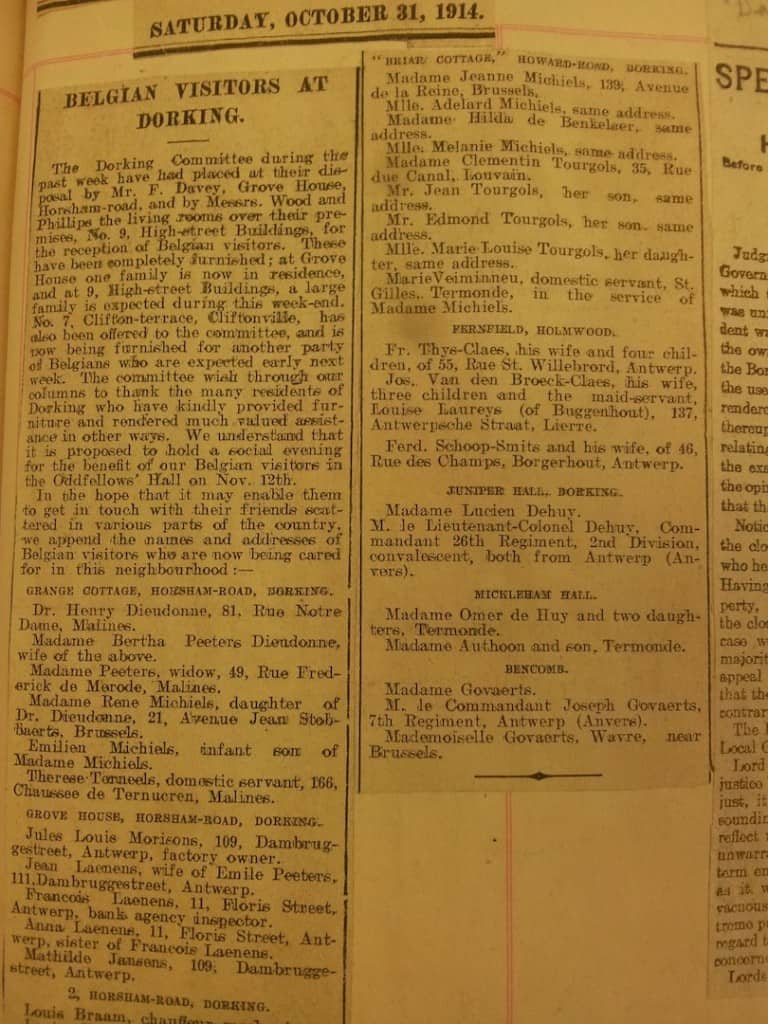In October 1914 Dorking Urban District Council agreed to find homes for Belgian refugees. Appeals went out for empty properties, food, fuel and clothing. In Capel, the Women’s Adult Education group sewed clothes, the Duke of Norfolk made wood available from local commons, coal merchants donated coal, and households supplied food and clothing.
By November the first 35 refugees were being housed at Grange Cottage and Grove House, both in Horsham Road, at 2 Horsham Road and 9 High Street Buildings, at 7 Clifton Terrace in Cliftonville, Briar Cottage in Howard Road and Fernfield in Holmwood, at Shrub Hill, and at Mickleham and Juniper Halls. The incomers included a doctor, an Antwerp factory owner, and several army officers. The Congregational Church found homes for another party
The refugees were reliant on charity. Local people raised funds for them and collected in books in French. On Wednesday afternoons the Wesleyan Hall on South Street became a gathering place for English language classes
The refugees’ situation remained precarious. In 1915 the Council exempted properties housing refugees from the requirement to pay rates on the grounds that the properties would have been unoccupied but for the Belgians, who were too impoverished to pay.

In order to help refugees’ families trying to track them down the Dorking & Leatherhead Advertiser published names and addresses of all of those resident in the district.
Last : Price Rises
Next : Rifle Clubs

